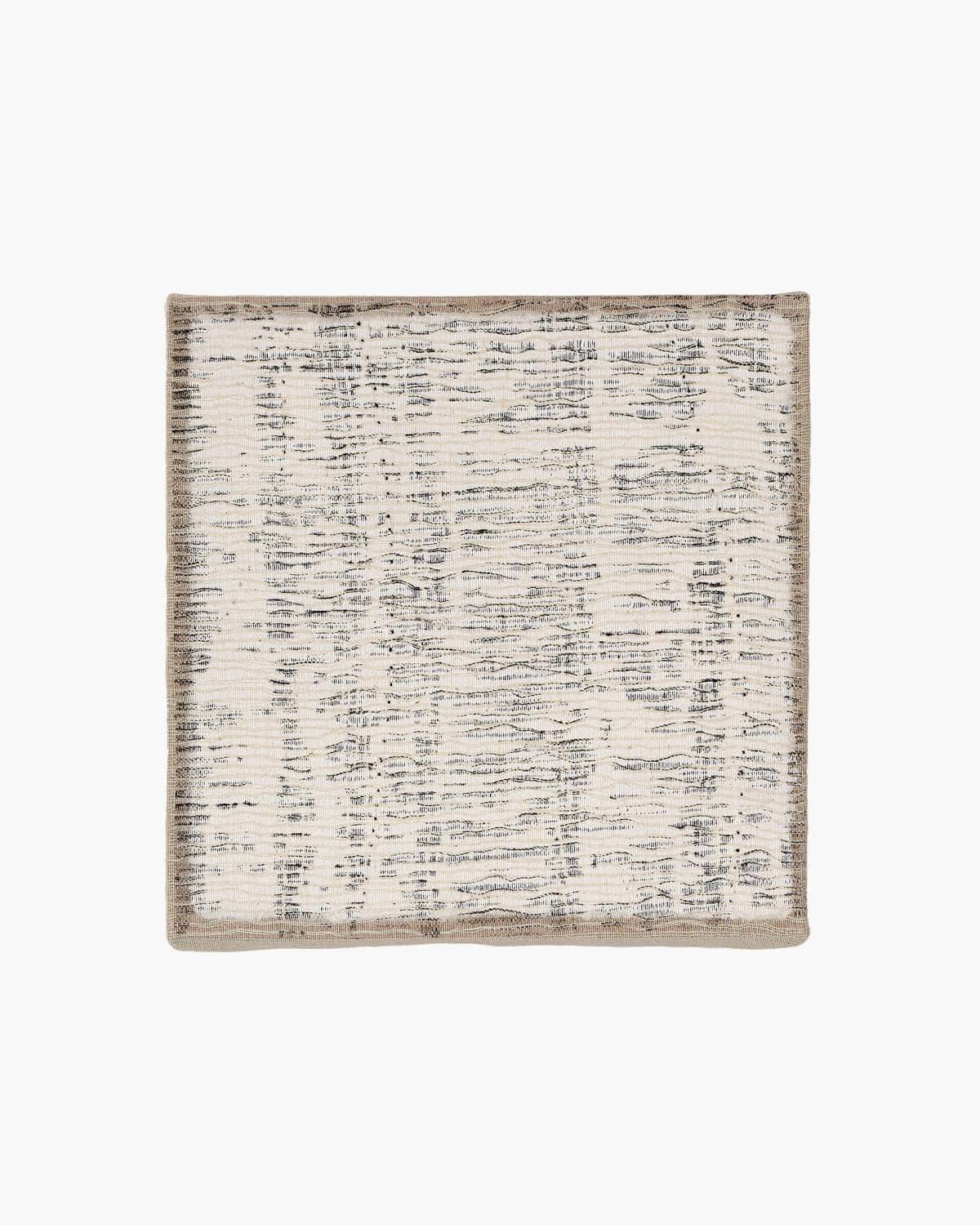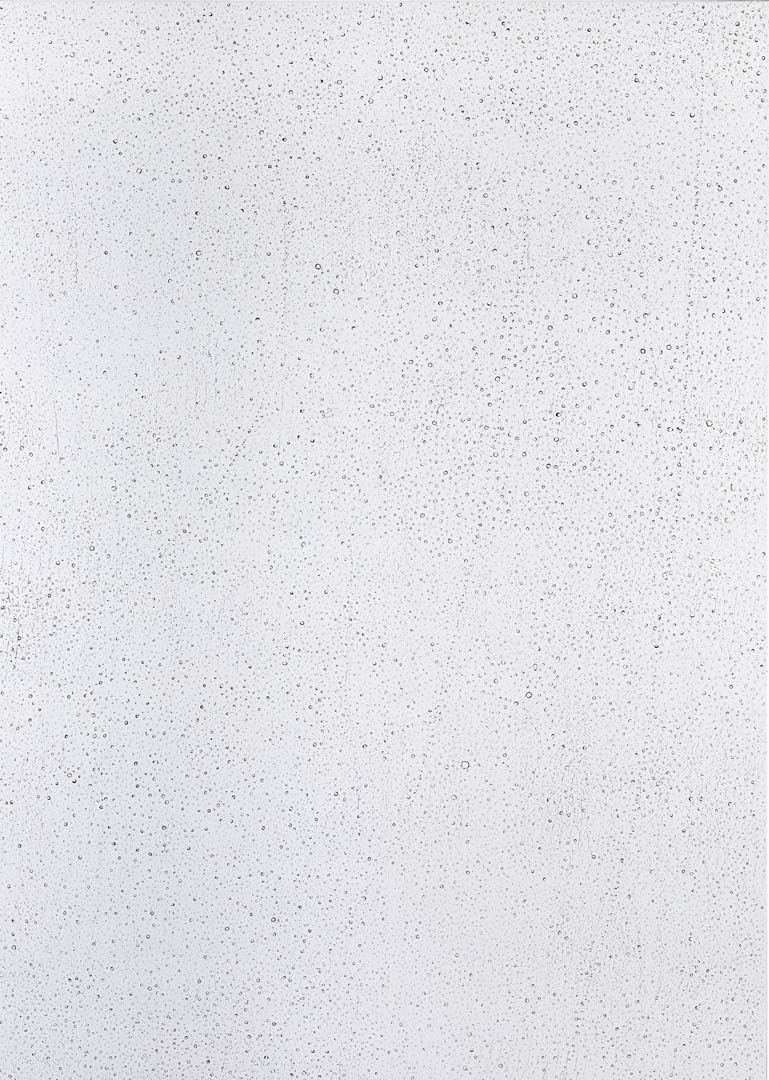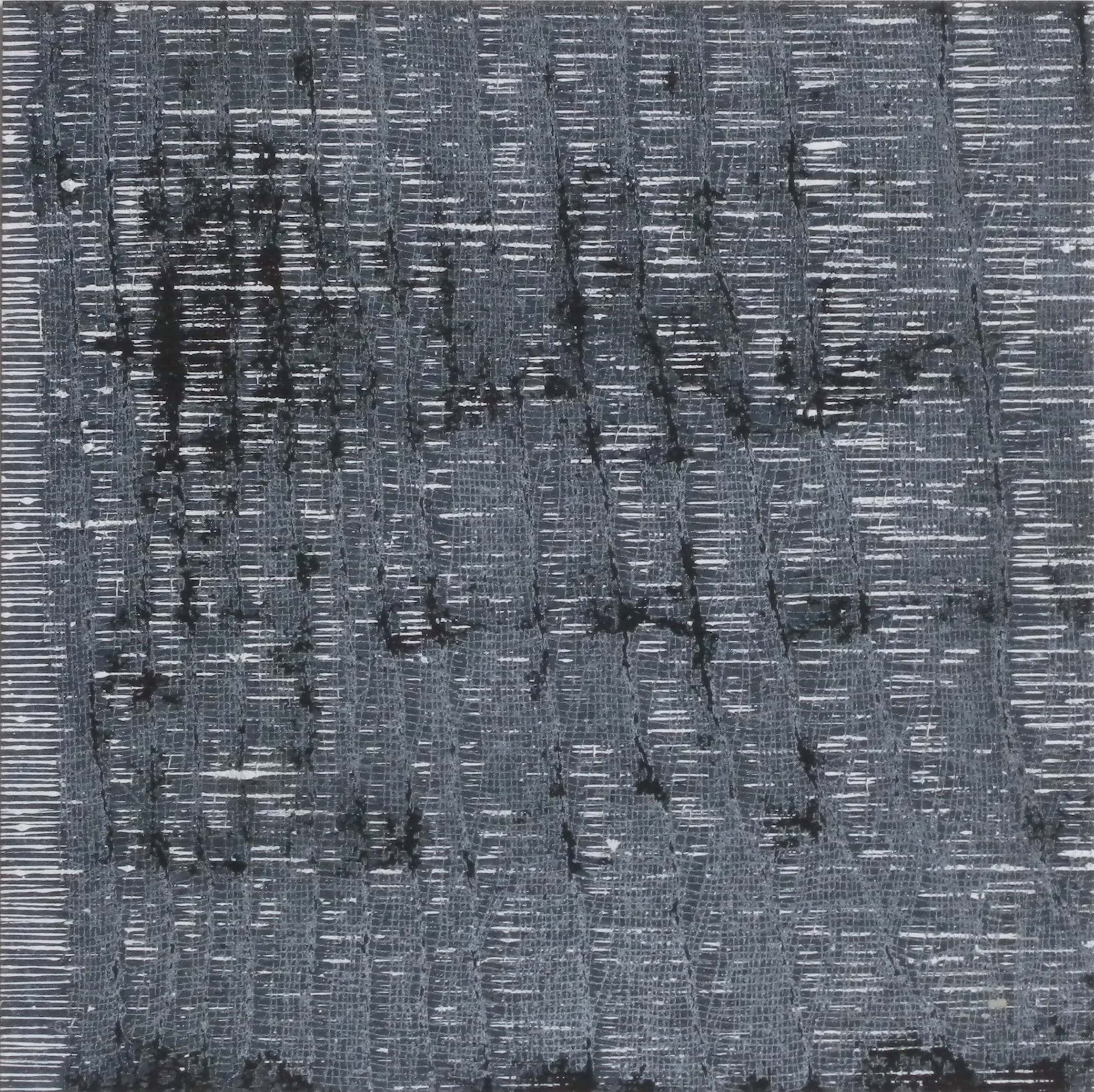
Untitled (AR32), 2019
This text was commissioned on the occasion of Rebecca Salter’s 2024 solo exhibition, Tracing Time. The text is written by Thomas Marks, a London-based writer, editor and fellow of the Warburg Institute.
Rebecca Salter collects images that resemble her paintings. Posted on Instagram, her photographs show abstract patterns and textures, some monochrome in themselves and others shot in black and white. Most are recognisable as snatches of the physical world but all are rendered unfamiliar through cropping and the suspension of time. Here are shadows on a wall, a scuffed floor, splotchy clouds; here, perhaps, beads of condensation, striations webbing a pane of glass, the craquelure of bark. A one-word caption loosely moors each image: ‘morning’, ‘evening’, ‘evening’, ‘morning’.
The experience of time is a key preoccupation for Salter. Those laconic captions indicate rhythms that are fixed, immediate and inevitable, even if they fluctuate geographically and through the seasons. The subjects of these photographs, however, overlay what occurs daily with timeframes of their own: with slow, geological time; or the generations of use that have marked a surface; or the momentary lifespan of, say, a bubble or a firework. How we perceive time’s passing – how we apprehend what the French philosopher Henri Bergson called la durée (duration) – becomes still stranger in the consciousness that the world is forever proceeding all around us in both slow motion and fast forward.

Untitled (JA05), 2020. Tracing Time, 2024
Within those bounds, however, for Salter to make paintings is not to fill but to fulfil time. Wordsworth wrote of the ‘brief solace’ of the sonnet form, as a set of constraints that allow the mind to focus and flourish within the firmness of its rules. Although Salter is committed to experimentation – with unfamiliar materials, for example – in each work she restricts her mode of expression, usually curbing her palette to a single shade of black sumi ink (which can have faint red or green hues, depending on its organic components) and to one or two types of mark that will eventually traverse most of the surface (little dots or dashes, applied with an ink pen, for instance, or small holes punched through the linen with a sharp implement).
The time period of making any work is registered through such modes of repetition. It is an irony of Salter’s practice, particularly in recent years, that for an artist whose studio time is curtailed she should ration her production to large-scale works that demand weeks or months of her attention. The tens of thousands of tiny circles in JA05, for example, will have consumed weeks of studio time, with each mark applied methodically by Salter’s hand, working horizontally on the linen; in works such as AM24, she applies a piece of muslin to the support before altering the direction of the horizontal threads in between each of the myriad crossing points where they intersect with the verticals.
To repeat something over and again need not be, as Tennyson once had it, a ‘sad mechanic exercise’. Indeed, for Salter it is the opposite of monotony: a means to explore not sameness but likeness and variation. Creating a high volume of similar marks, her eye attunes itself to their difference, as her pen gradually drains its ink or as local rhythms or shapes emerge in the slight disparities of spacing between the dots or lines. An important reference point, perhaps unsurprisingly, is repetition in music, with the space it allows for interpretation in performance: the Canto Ostinato (1976) by Simeon ten Holt, for instance, in which the musicians repeat the same 106 ‘sections’ of the piece in any order and recurrence of their choosing.
Repetition is also a meditative technique, of course, and beyond that bears relation to the charm or the spell. In the iteration of words or sounds might we retune ourselves, or even alter the objects and beings that surround us? Salter’s paintings allow her to sense the motility of time, to feel it flexing and bending in their making. But they also have a way of compelling us, their viewers, to adjust to their deliberate and emancipating time signatures.
(By Thomas Marks)
